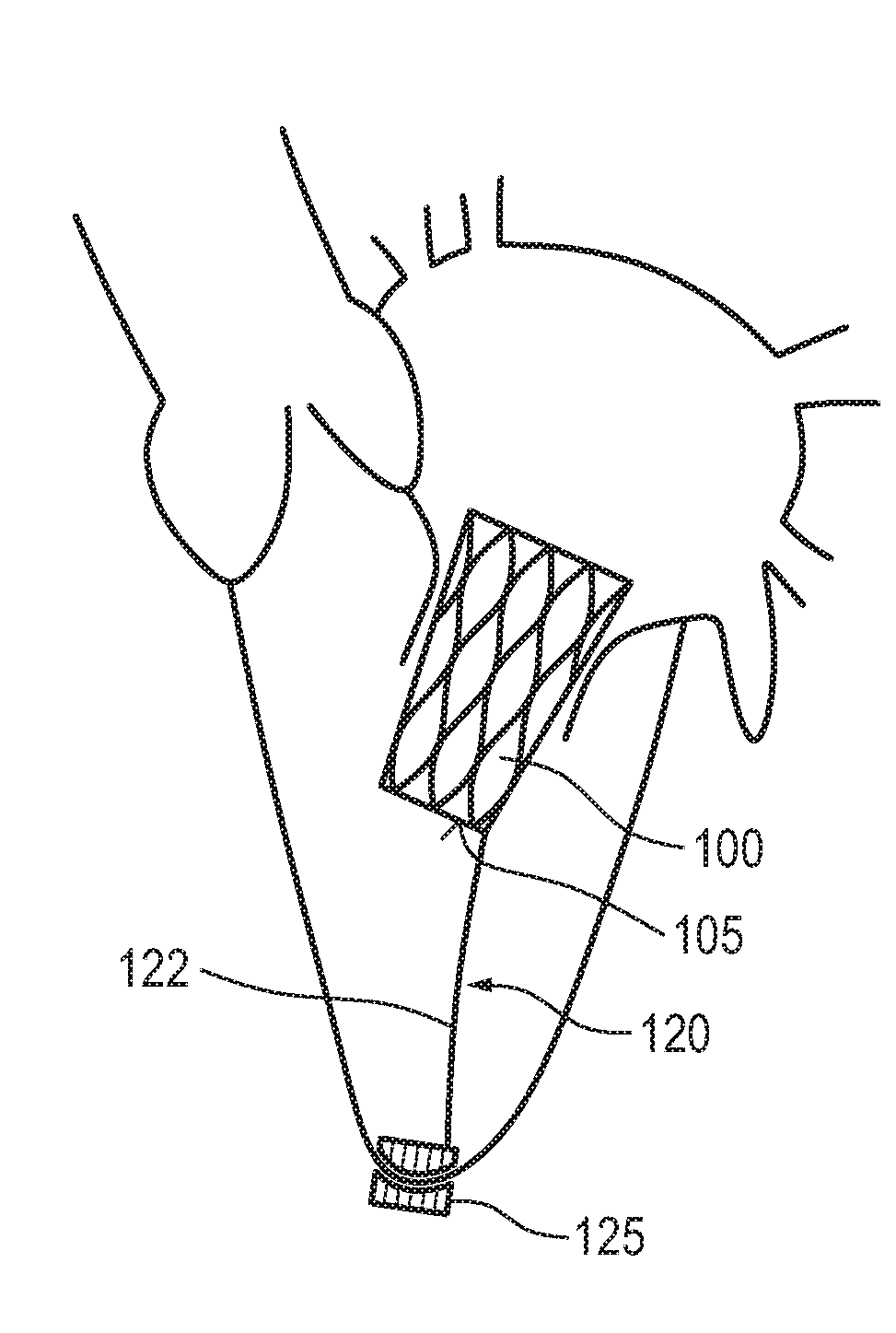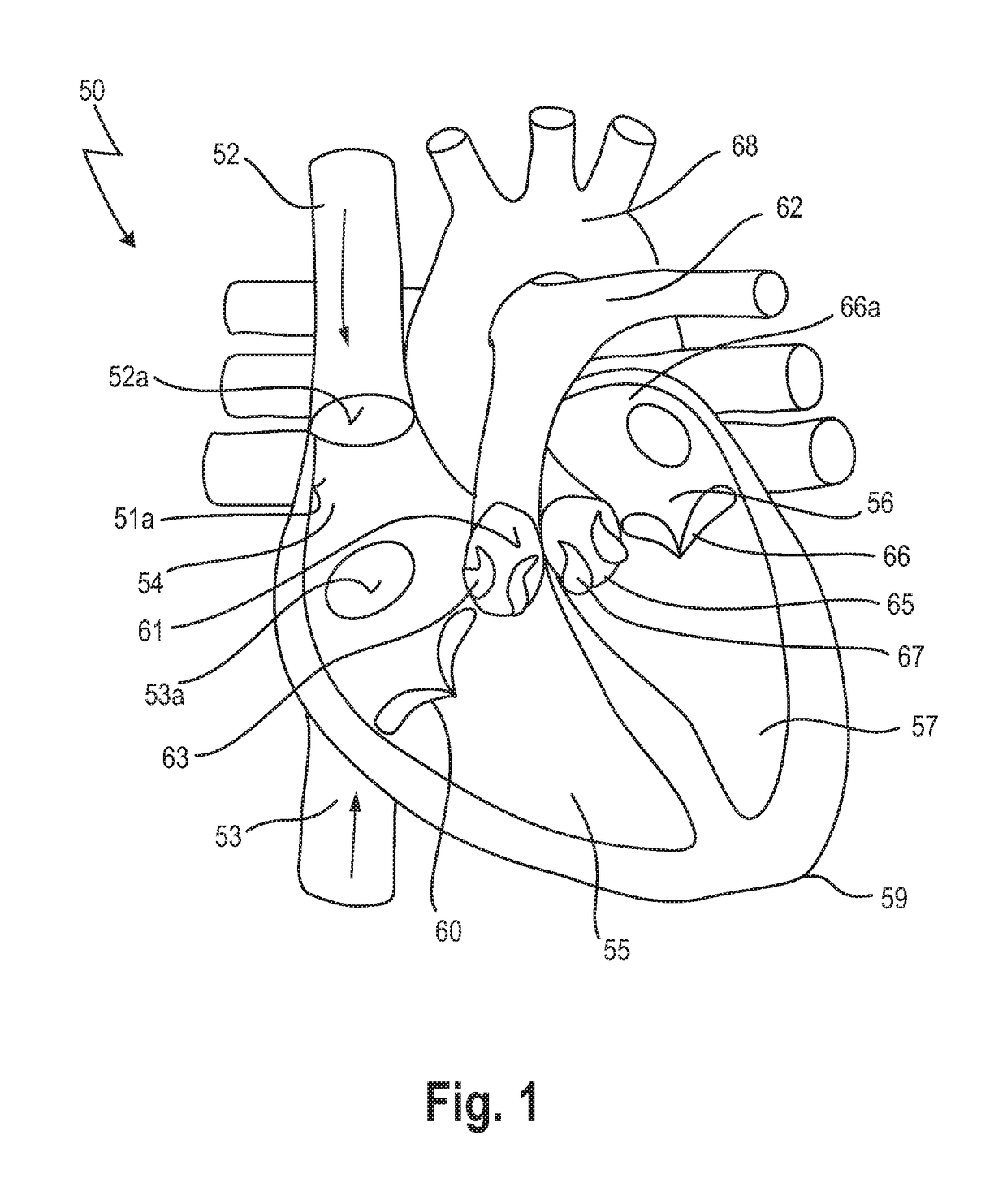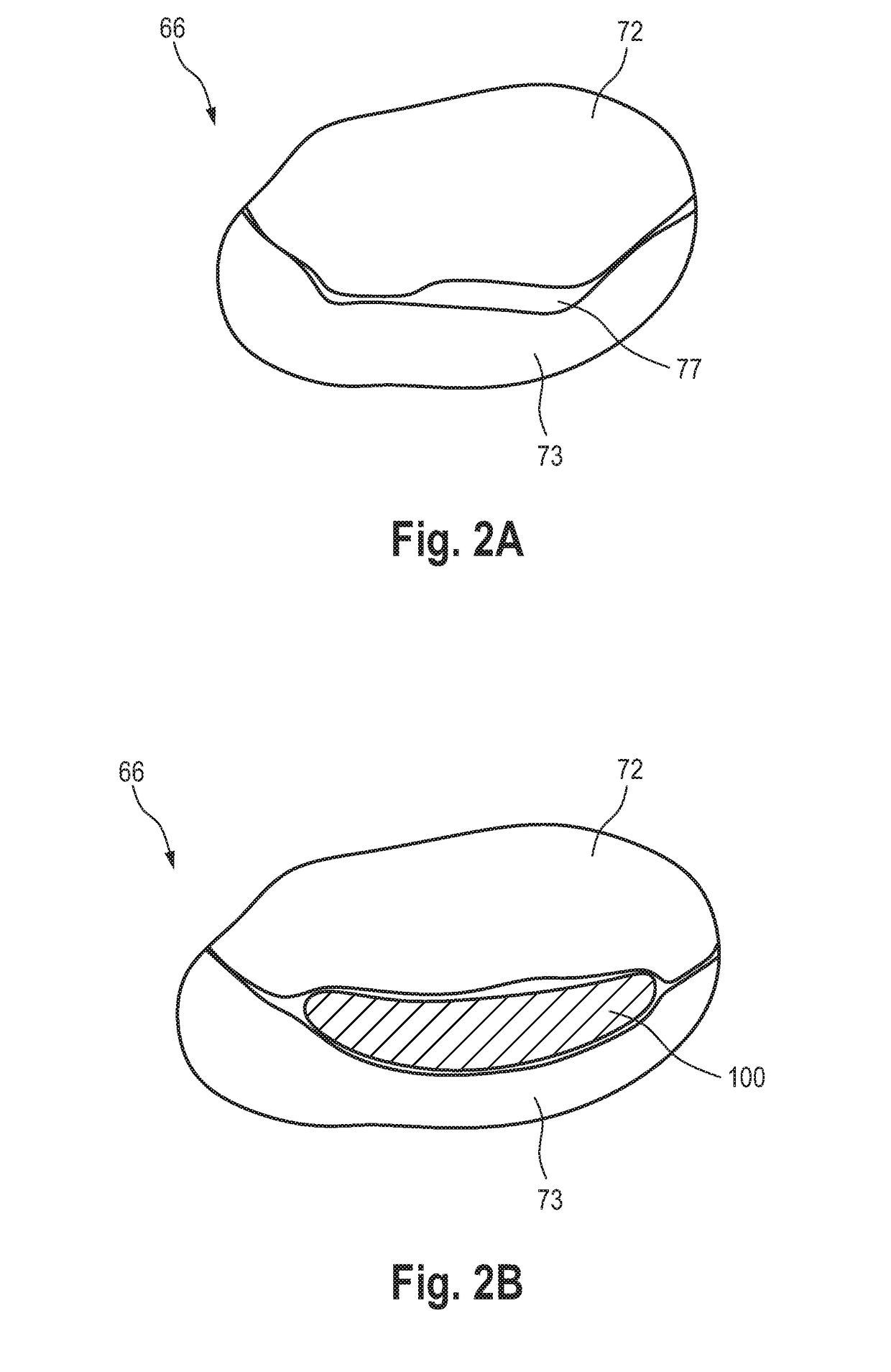Prosthetic mitral valve coaptation enhancement device
- Summary
- Abstract
- Description
- Claims
- Application Information
AI Technical Summary
Benefits of technology
Problems solved by technology
Method used
Image
Examples
Embodiment Construction
[0083]In FIG. 1, a human heart 50 is depicted, having a right atrium 54, a right ventricle 55, a left atrium 56 and a left ventricle 57. Also depicted in FIG. 1 is a portion of the vena cava superior 52, entering the heart 50 via the right atrium 54, and a portion of the vena cava inferior 53.
[0084]In more detail, the superior vena cava 52 returns the blood from the upper half of the body, and opens into the upper and back part of the right atrium 54, the direction of its orifice 52a being downward and forward. Its orifice 52a has no valve.
[0085]The inferior vena cava 53, which has a larger diameter than the superior vena cava 52, returns the blood from the lower half of the body, and opens into the lowest part of the right atrium 54, its orifice 53a being directed upward and backward, and guarded by a rudimentary valve, the valve of the inferior vena cava (Eustachian valve, not shown).
[0086]The right ventricle 55 has a triangular in form, and extends from the right atrium 54 to nea...
PUM
 Login to View More
Login to View More Abstract
Description
Claims
Application Information
 Login to View More
Login to View More - R&D
- Intellectual Property
- Life Sciences
- Materials
- Tech Scout
- Unparalleled Data Quality
- Higher Quality Content
- 60% Fewer Hallucinations
Browse by: Latest US Patents, China's latest patents, Technical Efficacy Thesaurus, Application Domain, Technology Topic, Popular Technical Reports.
© 2025 PatSnap. All rights reserved.Legal|Privacy policy|Modern Slavery Act Transparency Statement|Sitemap|About US| Contact US: help@patsnap.com



